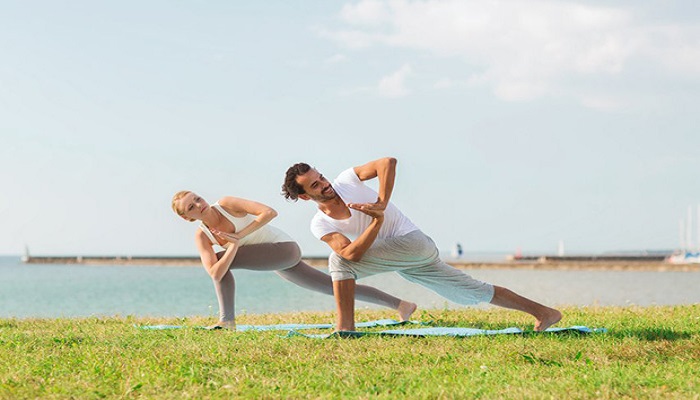
The ancient exercise and meditation practice of yoga have continuously grown in popularity over the years. Its popularity is due to its successful results in eliminating stress and anxiety and improving balance and strength.
There are actually dozens of different types of yoga, with a wide range of skills required.
Here are seven types of yoga which is best for whole body and mind.
Hatha
Hatha is a general form of yoga that focuses on posture. Many sub-categories of yoga fall under the umbrella of Hatha, so classes marketed at Hatha are often basic introductions to the different postures used in most branches of yoga. Beginners should definitely consider attending a Hatha class because they’re calm and laid back. The routine isn’t a very hard work out, it’s designed to simply loosen and relax your body. Once you have the hang of it, this kind of yoga can easily be practised in the comfort of your home to relieve stress after a long day.
Vinyasa
Vinyasa is a fun, light-hearted form of yoga that mixes intense work-outs with peaceful poses. The classes all differ from each other, giving those who participate in them a new experience every time. Music usually replaces the silence heard in most yoga classes and the poses are designed to flow from one to the next. In fact, “Vinyasa” is the Sanskrit word for “flow.” If you’re used to fluid, choreographed workouts like Zumba or Insanity, Vinyasa yoga will come easily to you.
Ashtanga
Ashtanga is an ancient practice, brought to America in the early 1970s. Ashtanga yoga incorporates little meditation but instead uses fast and physically demanding routines. Every movement is linked a specific breath, giving the session a certain rhythm. The order of the routine’s moves stays consistent every single time. Ashtanga is a good style of yoga for those used to rigorous physical exercise and generally feel comfortable with the basic concepts of yoga.
Iyengar
Iyengar yoga is very focused, and almost always practised with a teacher. It’s one of the only main branches of yoga to incorporate as many props as it does, and it’s not uncommon to use chairs, ropes, blankets, blocks or straps. These props make it an ideal practice for those with special conditions or disabilities, and the highly trained teachers ensure the physical safety of all who participate. Another thing that sets Iyengar apart is the attention you put to your muscles and body with each pose. Poses are generally held much longer in Iyengar yoga than any other branch. Iyengar is void of any cardio-like exercise but builds extreme strength through holding poses for so long.
Bikram
Bikram is extremely unique in that it’s the only kind of yoga exclusively held in hot, artificially heated rooms. This ensures that you’ll work up a great sweat no matter how hard you push yourself, though the routine of 26 poses is relatively demanding. Each pose is very distinct and they’re expected to be done in a specific order to stay true to the Bikram style. Bikram is an interesting kind of yoga enjoyed by many. Try it out if you enjoy saunas or steam rooms and are ready to take your yoga experience to the next level.
Anusara
Anusara yoga was introduced in 1997, making it one of the newest and most popular branches of yoga. It uses components of the Iyengar style but is generally more health-oriented. Despite being developed recently in America, Anusara is still very spiritual in its roots, focusing on opening and closing mantras, muscular and organic energy, the seven “loop” points of the body that balance and align, and reaching inner peace. Official Anusara instructors take you throw the motions, giving you an introduction to meditation with physical components.
Jivamukti
Of all of the popular styles of yoga commonly practised in the U.S., Jivamukti is the most spiritual. They offer beginner classes, which introduce the class to standard poses and simple meditation. More advanced classes focus on a particular theme of yoga each week and introduce poses to relate to the theme. In terms of meditation and spirituality, Jivamukti incorporates readings, chants and music.

Post Your Comments